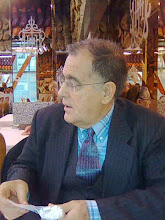Lisa Montes
Sociological Approaches to García Lorca’s Literary Productions
(Madrid, Ediciones del Orto, 2016, 228 pp.)
TABLE OF CONTENTS
PROLOGUE
Primary Sources
Chapter 1
Chapter 2
Chapter 3
Chapter 4
Previous Criticisms
History of Habitus
Principal Sources on Theory
CHAPTER ONE: Habitus in the Rural Trilogy
Doxa
Symbolic Violence
Masculine Domination
CHAPTER TWO: Habitus in Poema del cante jondo and
Romancero gitano
García Lorca and the Gypsies
The Arrival of the Gypsies in Spain
Las leyes gitanas
Perception of the Gypsy Female
The Poems
“Dos muchachas”
“La seguiriya”
“Café cantante”
“La petenera” vignette
“Baile”
“Baile”
“La casada infiel”
“Romance de la guardia civil española”
CHAPTER THREE: Bourdieu and Lorca as Observers
Bourdieu: Observer of the Kabyle in Algeria
García Lorca: Observer in New York and the Gypsies
CHAPTER FOUR: Poetic Styles of García Lorca
Romancero gitano
Poema del cante jondo
EPILOGUE
WORKS CONSULTED
.
EPILOGUE
WORKS CONSULTED
In this investigation I analyze the work of Spanish poet and dramatist Federico García Lorca using mainly the cultural theories of French sociologist Pierre Bourdieu and other thinkers who have influenced Bourdieu in signif-icant ways. Of these thinkers I shall include not only ancient and medieval philosophers such as Aristotle and St. Thomas Aquinas, but also more recent thinkers such as Marcel Mauss, Michel de Certeau, Norbert Elias and Max Weber. The primary sources that I will investigate are Federico García Lorca’s Poema del cante jondo, Romancero gitano and Poeta en Nueva York, all of which are compilations of poetry, and his rural dramatic trilogy, which consists of Bodas de sangre, Yerma and La casa de Bernarda Alba. The first two collections of poems explore the world and condition of the Spanish gypsies, while the third relates the author’s experiences while temporarily living in the urbanized world of New York, a stark contrast to the rustic surroundings to which he was accustomed.
.
.

